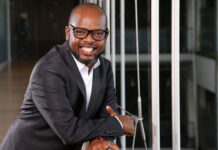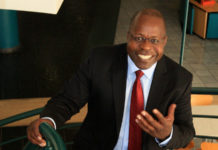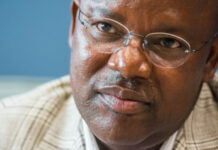
The devastating impact of South Africa’s COVID-19 lockdown on economic activity has given Eskom the opportunity to make headway with critical maintenance at its ageing power plants, and to tackle major design flaws at Medupi and Kusile, the new additions to its coal-fired fleet.
Progress with the work, and the likelihood of a sluggish recovery in the country’s economy, have allowed the utility to claw back lost capacity and significantly reduce the risk of a resumption of rotating power cuts – known as load-shedding – in the coming year.
But supply constraints will reassert themselves as growth gathers momentum, and a new crisis has emerged within Eskom’s decaying distribution infrastructure, which is being overloaded and disrupted by illegal connections, theft and vandalism in crowded communities.
The utility has begun to cut power to protect the system in affected areas during peak periods, to try and stem a spike in explosions at transformers and small substations that have caused fatalities and often leave the surrounding communities without power for days.
Eskom says these problems cost its network in Gauteng alone R1bn a year, and that power cuts to overloaded areas will have to continue for the foreseeable future – which poses another challenge to stable power supply and raises the risk of deepening social unrest.
Nonetheless, the reprieve offered by lockdown restrictions has allowed the utility to push ahead with some of its most pressing maintenance without having to implement load-shedding to broad swathes of its customers.
“COVID-19 has helped us quite a lot. If we didn’t have the opportunity during lockdown to do short-term opportunistic maintenance we would have been in big trouble,” Eskom COO Jan Oberholzer said in an interview.
In January, Eskom was forced to impose its severest power cuts on record, reducing supply by as much as 6,000MW – more than 13% of its installed capacity – just as commercial industries and business resumed operating after the year-end holiday season.
The utility’s new CEO, André De Ruyter, warned in early March that if Eskom could not push ahead with a ramped-up maintenance schedule requiring some low-level power outages, intensive bouts of load-shedding could carry on until the middle of 2021.
A version of this article was first published in the Mining Yearbook 2020 which is available here: https://www.miningmx.com/the-mining-yearbook-2020/
But the sharp drop in economic activity and electricity demand after the lockdown began on 27 March allowed the utility to increase planned maintenance to 15% of its installed capacity of about 44,000MW during April, well above a normal goal of 10%.
However, the fall in electricity sales over the two months also cost Eskom R5bn, putting a large dent in its cost-cutting drive and pointing to a likely net loss of more than R20bn during the financial year, which ends in March 2021.
Sales were expected to return to projected levels by the end of August – provided all big consumers were fully operational, Oberholzer said. But with the economy sliding into its worst recession in seven decades, a recovery at this pace is unlikely.
Economists say it will take three to four years before output returns to the levels seen in 2019 – which means that Eskom can pursue what it calls “reliability” or long-term maintenance with the aim of removing any risk of load-shedding by the end of August 2021.
Oberholzer said the drive to stabilise the system, including the problems with distribution, would add another R30bn over the coming five years to the utility’s budgeted maintenance spending, which amounted to just R8bn in 2019.
The intention is to fund this through cost-cutting, rather than relying on the state for bailouts, which De Ruyter has insisted will not be needed this year. Oberholzer said the focus will be on saving money on procurement of goods and services.
Over the next two years, Eskom intends to begin the conversion of its diesel-fired Open Cycle Gas Turbines (OCGTs) so that they can run on gas, he added. This will make them much less expensive to operate and will also significantly boost their capacity from 2,409MW at present.
Intended only as backup, the OCGTs have been utilised heavily in the past couple of years to either avoid or ease the intensity of load-shedding, costing Eskom R4.2bn annually.
The utility was forced to bring them on-line again when a cold front hit Gauteng in mid-June 2020, unexpectedly pushing demand up by 2,000MW during the evening peak, and prompting Eskom once again to ask customers to reduce their power consumption before eventually imposing a new round of load-shedding
University of Cape Town emeritus professor Anton Eberhard, the chair of a presidential task team set up to resolve Eskom’s financial and technical challenges, said this had revealed the fragility of South Africa’s power system and was a reminder that the utility did not have enough operational power capacity or operating reserve margin to support an economic recovery.
“We are already late in guaranteeing planned capacity additions for 2022 and it’s almost certain that we’ll experience further load-shedding over the next three years,” he said.
No new grid-connected electricity generation capacity has been procured by Eskom since November 2014, as the utility’s former CEO Brian Molefe halted a programme of buying what was mainly renewable energy from Independent Power Producers (IPPs).
We are already late in guaranteeing planned capacity additions for 2022 and it’s almost certain that we’ll experience further load-shedding over the next three years
At present, IPPs provide more than seven per cent of Eskom’s electricity. Oberholzer hopes to create a reliable capacity buffer of 2,000MW at the end of the current financial year, through increasing the Energy Availability Factor (EAF) of Eskom’s coal-fired plants, which has drifted lower in the past decade due to neglect and mismanagement.
Eskom’s EAF declined from 78.61 in the calendar year 2017 to 66.96 in 2019, then sank to 64.99 in the first 24 weeks of this year, according to Chris Yelland, MD of EE Business Intelligence. “Unless new generation capacity comes onstream, the best we can hope for is that the EAF stabilises at current low levels,” he said.
But Oberholzer predicts that it will climb to 69% by the end of the 2021 financial year, and is targeting an EAF of 72% in FY 2022 and 74% in FY 2023.
PROJECTS NOW AT R300BN
Another work in progress is fixing the design flaws at Kusile and Medupi, which, with a design capacity of 4,800MW each, are among the biggest coal-fired power stations in the world. Approved in 2007, they were meant to have been completed by 2015, at a combined cost of R150bn.
The latest cost to completion estimate declared by Eskom in its FY 2016 results was more than R300bn, which excluded interest accrued during construction, outstanding claims by contractors, and correcting major design flaws at Medupi and Kusile.
Oberholzer said that addressing the problems at the two plants would require about R300m for each of their 12 units, with the costs initially split evenly between Eskom and Mitsubishi Hitachi Power Systems, which won the contract to build their boilers.
The last unit at Medupi was expected to be completed by February 2021 and the work at Kusile would be finished in May 2024, he added. The timeline for Kusile does not bode well for the additional power needed by a growing economy.
In December 2019, President Cyril Ramaphosa announced plans to urgently procure 2,000MW of new capacity from private producers to help close the widening gap between supply and demand for electricity. Six months later the process had not yet begun, and it is likely to take several years before that power is available
Roger Baxter, CEO of the Minerals Council of SA, said that with 10 Gigawatts (10,000MW) worth of Eskom’s old coal-fired plants set to be decommissioned over the coming decade, it was essential to get replacement capacity on-stream quickly – and the only way was to make it easier for the private sector to generate its own power.
Eskom will remain a major player in the electricity supply industry, particularly in generation, for many years to come, but South Africa has to diversify its electricity supply base. That’s going to require private investment in private generation, and that competition will be in everyone’s interests
“At the moment people are just focusing on making sure that they have viable businesses when the COVID-19 crisis ends, but the energy crisis hasn’t gone away,” he said.
“It has given temporary respite to Eskom and given them time to improve their reliability. But demand will come back and when it does, there will be an escalating amount of pressure on government to think differently about what other sources of supply can come on-stream.”
Baxter said that in the mining sector alone, companies had indicated that they were willing to invest in 2.3GW of their own plants to supplement power supply – of which 1.8GW would be grid-tied solar and wind power, and the remainder coal. Much of that could be brought online within 18 months, he said.
According to the South African Photovoltaic Association, there is an estimated 1.1GW of embedded generation already installed within the private sector, but regulatory hurdles are holding up installations of more than 10MW, which would provide a much bigger power boost to industry.
“Eskom will remain a major player in the electricity supply industry, particularly in generation, for many years to come, but South Africa has to diversify its electricity supply base. That’s going to require private investment in private generation, and that competition will be in everyone’s interests,” Baxter said.
De Ruyter, who took up his post in January 2020, has said that the days of a “vertically integrated, monolithic” utility like Eskom were over and he supports the government’s plans to break the utility up into generation, transmission and distribution entities.
But the schedule to complete the restructuring, which would give the private sector and municipalities bigger roles in generation, has been pushed out, with the Department of Public Enterprises setting a completion target of March 2023.











